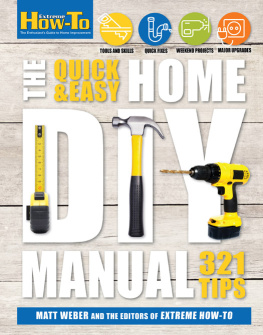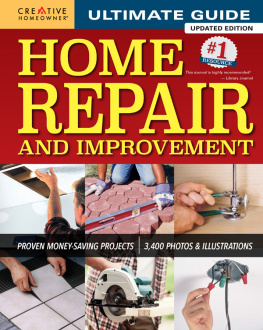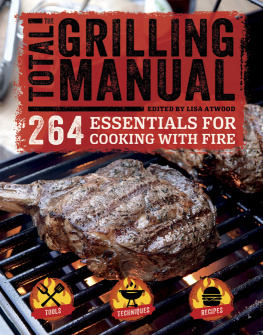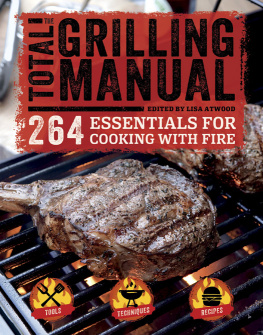Weber - The quick & easy home DIY manual
Here you can read online Weber - The quick & easy home DIY manual full text of the book (entire story) in english for free. Download pdf and epub, get meaning, cover and reviews about this ebook. year: 2015, publisher: Weldon Owen, genre: Home and family. Description of the work, (preface) as well as reviews are available. Best literature library LitArk.com created for fans of good reading and offers a wide selection of genres:
Romance novel
Science fiction
Adventure
Detective
Science
History
Home and family
Prose
Art
Politics
Computer
Non-fiction
Religion
Business
Children
Humor
Choose a favorite category and find really read worthwhile books. Enjoy immersion in the world of imagination, feel the emotions of the characters or learn something new for yourself, make an fascinating discovery.
- Book:The quick & easy home DIY manual
- Author:
- Publisher:Weldon Owen
- Genre:
- Year:2015
- Rating:4 / 5
- Favourites:Add to favourites
- Your mark:
- 80
- 1
- 2
- 3
- 4
- 5
The quick & easy home DIY manual: summary, description and annotation
We offer to read an annotation, description, summary or preface (depends on what the author of the book "The quick & easy home DIY manual" wrote himself). If you haven't found the necessary information about the book — write in the comments, we will try to find it.
Weber: author's other books
Who wrote The quick & easy home DIY manual? Find out the surname, the name of the author of the book and a list of all author's works by series.
The quick & easy home DIY manual — read online for free the complete book (whole text) full work
Below is the text of the book, divided by pages. System saving the place of the last page read, allows you to conveniently read the book "The quick & easy home DIY manual" online for free, without having to search again every time where you left off. Put a bookmark, and you can go to the page where you finished reading at any time.
Font size:
Interval:
Bookmark:
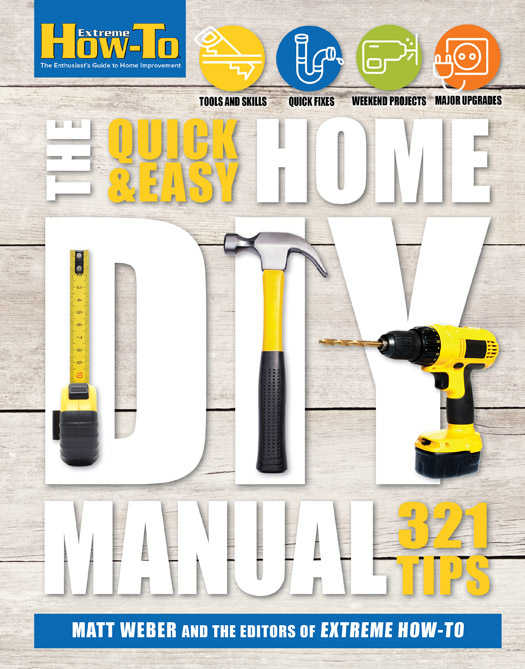


For a certain type of person, the sound of surrender is the ring of a phone as they call a repairman. Thats me. I will invariably attempt a home repair or improvement before I pay good money to someone else for a job I can do myself.
Does that make me arrogant? Maybe. Stubborn? Absolutely. Am I a cheapskate, too? I prefer the word frugal.
And Im not alone.
From long-running television programs like This Old House to cable channels such as HGTV and the DIY Network, it should be obvious that do-it-yourself home improvement isnt a passing trend so much as a lifestyle thats been embraced for years by hard-working individuals from coast to coast. I mean, heck, the first settlers built their own homes long before building developers were throwing up high-rise condos, and were simply carrying the torch of that rich tradition of self-reliance.
For someone to follow this path requires an independent spirit, a willingness to break a little sweat andmaybe most importantan eagerness to learn new things.
I came aboard as editor of Extreme How-To in 2003 with a college degree and a raft of work experience from time spent laboring in a steel fabricating plant, an aluminum warehouse, a shipping hub, a framing shopI could go on and on; I even once had a gig selling knives (and hated it). Although I was no home improvement expert at the time, I was young and ambitious and eager to learn. I was unafraid to try new things, and no matter what challenges I faced, Id figure them out on the job.
I then spent many years studying all the things I realized I didnt know about home improvement.
Thats where this book comes in. A collection of hundreds of tried-and-true techniques and pro tips for success, we cover the most common DIY projects inside and outside the home. For years the aim of Extreme How-To has been to demystify professional-grade projects for the do-it-yourselfer, to equip our readers with the know-how to build it yourself, and build it better.
If youre willing to learn new things and you dont worry about getting your hands dirty, this manual will help conquer your repairs and remodels without ever having to say I surrender.

If youre new to home improvement, get ready for a wild ride. Its a fun and satisfying journey, but as your projects grow more ambitious than simple fixes and minor improvements, youll find the big jobs can require a lot of workmuch more than youll see edited into split-second TV clips on your favorite home show. Any job can be rife with unforeseen pitfalls, but trial-and-error can be a powerful teacher.
The best way to minimize errors is to gather as much information as you can prior to beginning your project. The Internet is a goldmine of home-improvement information, from Extreme How-To s website to many others. Youll find all sorts of helpful videos on Youtubeits amazing how detailed some of instructional clips are. For large projects like deck-building or shed construction, buy a book dedicated to the subject that details the various design options and techniques for construction. Another great way to soak up knowledge is to observe a jobsite. For example, if you spend a few minutes watching a roofing crew tear off and replace a homes shingles, you might quickly decide that since you cant be in that many places at once, maybe roofing is a project best left to the professionals.
Some projects will require a permit from your local building department. In general, building codes are developed by industry associations to provide minimum safety standards for a homes occupants, the environment and the public at large. The codes are adopted and enforced by local governments and vary based on local political issues, environmental regulations, and so forth. Check with your local building inspector to determine all local requirements.
Although codes vary from state to state, a permit is generally required for remodeling projects that involve changes to the buildings existing footprint, electrical system or plumbing. Adding new windows to existing walls usually requires a permit. Youre likely to need a permit for projects that go beyond a simple repair or cosmetic improvement, such as:
adding supporting walls or removing load-bearing walls,
in-ground concrete pool or a porch/deck,
replacing the roof,
backyard shed,
concrete sidewalks, driveways and slabs
When a permit is filed, city officials will usually inspect the work completed at different stages to ensure it complies with current safety and health building codes.
When work is done to refresh the home, however, a permit is not usually required. Updating kitchen cabinets and countertops, for example, does not require a permit. Other remodeling updates such as flooring/ceiling coverings, painting/papering, tiling or carpeting can usually be done without a permit. Even if a permit isnt required, certain projects may require licensed professionals for structural, electrical and plumbing work. If youre not sure, check with your local city or county government office.
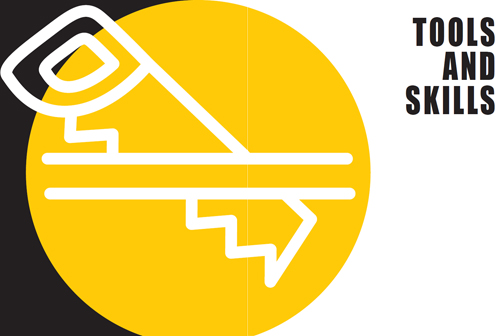


Some things you learn the hard way. For example, I once drilled into my hand. On a separate occasion I nearly electrocuted myself. While tools for home improvement can certainly prove handy, their associated work can often be hazardous, especially if you dont know what youre doing.
Its smart to always use the right tool for the job and to use it the way it was intended. And those little instruction manuals that are included by the manufacturerread those, too, because its more fun to learn the easy way.
My first toolbox was a gift from my dad and contained your basic hammer, screwdriver, pliers and a wrench. It grew over the years. These days I have a backyard garage to store all my stuff. You might never require quite that much room for your equipment, but the more projects you take on, the more your tool collection will expand. Start with the basic essentials and add items as you need them. Before you know it, tool collecting will get in your blood, and youll start picking up gadgets that you might not need today, but you might need someday.
This chapter will overview common toolbox essentials as well as highlighting some slightly more obscure devices that might just help your next project go smoothly. Well offer some basic instruction on how to use them, and provide professional insight that you wont find in the product literature. Well show when to grab the right glue, and when to use the right clamp. Youll get some good advice on how to gear up for a safe work area, as well as how to keep the house as clean as possible while you repair and remodel. So, get ready to review some cool tools and learn how to get the most out of them.
Font size:
Interval:
Bookmark:
Similar books «The quick & easy home DIY manual»
Look at similar books to The quick & easy home DIY manual. We have selected literature similar in name and meaning in the hope of providing readers with more options to find new, interesting, not yet read works.
Discussion, reviews of the book The quick & easy home DIY manual and just readers' own opinions. Leave your comments, write what you think about the work, its meaning or the main characters. Specify what exactly you liked and what you didn't like, and why you think so.

